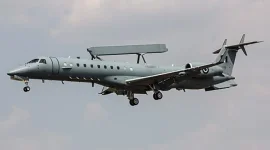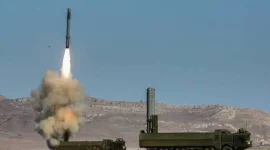The Indian Army is set to initiate a significant overhaul of its air defence artillery by planning the acquisition of over 1,000 advanced, new-generation air defence guns.
This major procurement drive aims to replace the military's ageing yet recently successful L-70 and Zu-23mm gun systems, marking a substantial step in modernizing India's capability to counter emerging aerial threats.
The move follows the notable success of digitally upgraded L-70 anti-aircraft guns in neutralizing Turkish-made drones that were operated by Pakistan.
These guns, which first entered service over fifty years ago, have been revitalized with modern systems including new radars and electro-optical sensors.
These enhancements provide an auto-tracking capability that has proven highly effective against unmanned aerial vehicles (UAVs) and other low-flying threats, demonstrating the continued viability of gun systems in modern warfare.
Despite the commendable performance of the retrofitted L-70s, a large portion of the Army's air defence inventory consists of non-modernized units. This has created a critical need to transition to more advanced platforms to maintain a technological advantage over potential adversaries.
The planned replacement will ensure a uniform and state-of-the-art defence shield against sophisticated aerial attacks.
The Corps of Army Air Defence currently employs a varied array of equipment, including the Schilka self-propelled anti-aircraft system, the Tunguska gun-missile system, and the Osa-AK surface-to-air missile system.
However, the L-70 and the Soviet-era Zu-23mm twin-barrelled guns form the core of the short-range air defence and are now slated for a phased replacement.
The new systems are expected to feature superior fire control systems, advanced sensors, and a higher degree of automation to effectively engage modern threats like drones, cruise missiles, and low-flying aircraft.
In a significant boost to domestic industry, the procurement will be pursued under the 'Atmanirbhar Bharat' (Self-Reliant India) policy.
Official sources have confirmed that the Army is not considering foreign-made guns for this requirement, placing a strong emphasis on indigenous design, development, and manufacturing.
This strategy aims to foster innovation within India's defence ecosystem and reduce reliance on imported military hardware.
The procurement process is already in motion, with a Request for Proposal (RFP) issued for an initial lot of 220 guns.
Trials for the competing systems are anticipated to begin shortly. The successful conclusion of these trials will trigger the procurement of the first batch, which is planned to exceed 1,000 units.
This large-scale acquisition highlights the Indian Army's commitment to strengthening its air defence infrastructure to secure the nation's borders against an evolving threat landscape.





